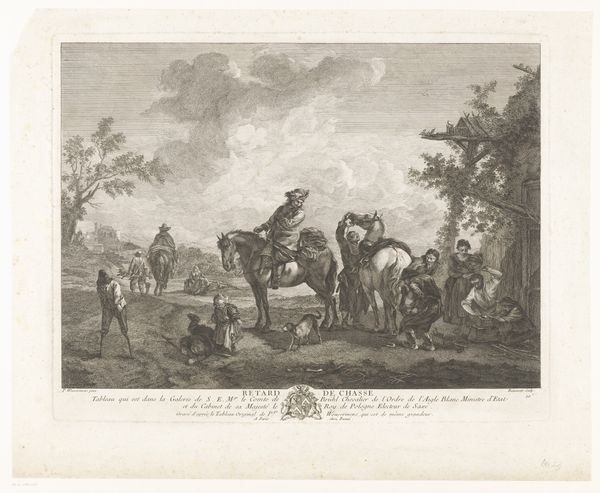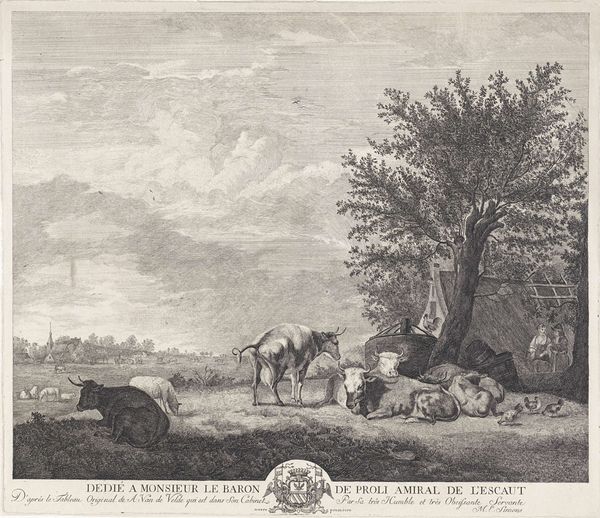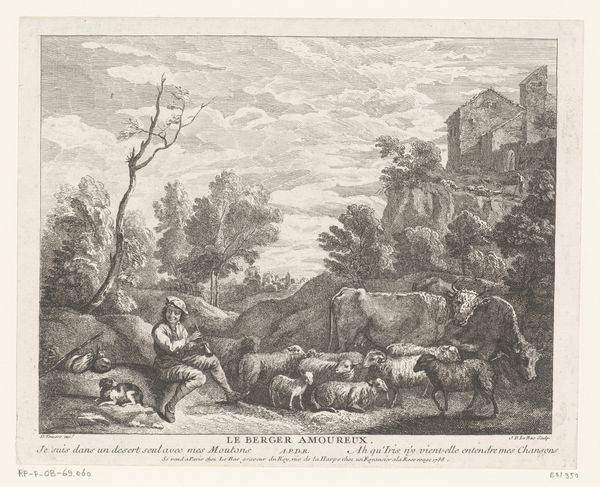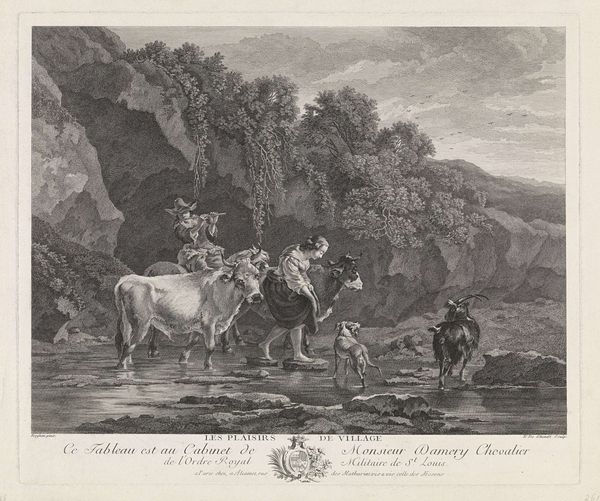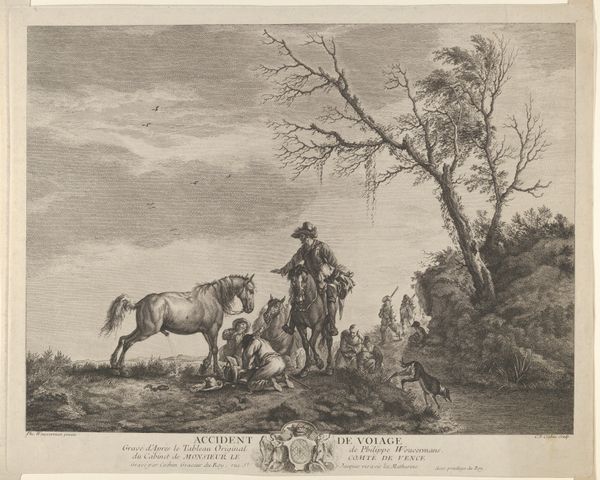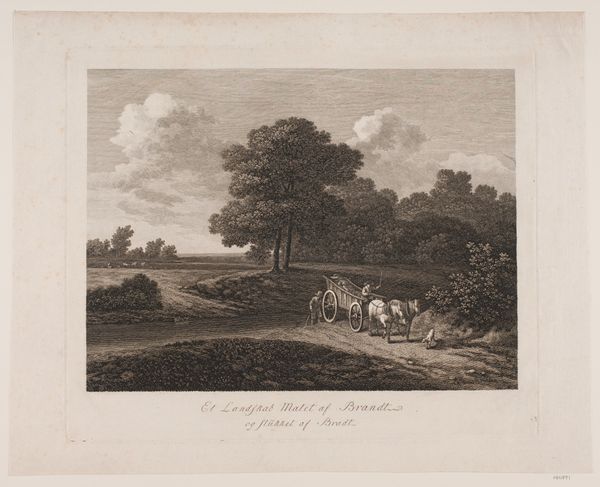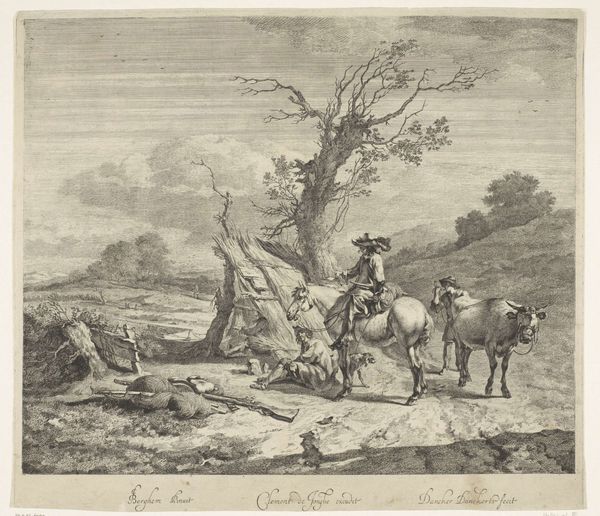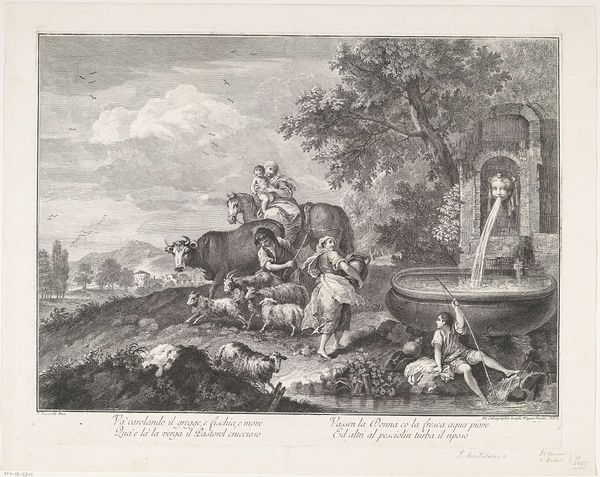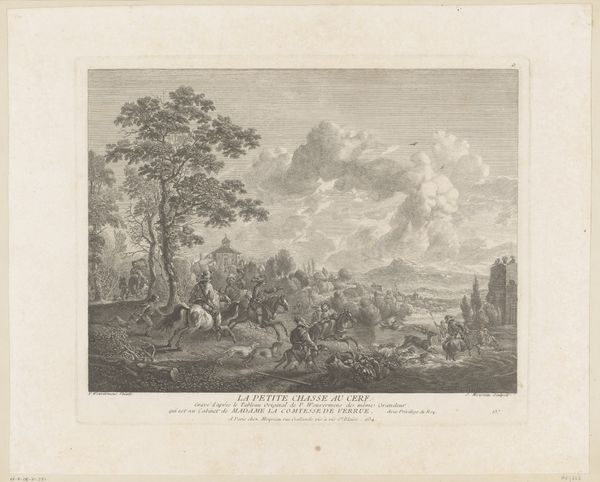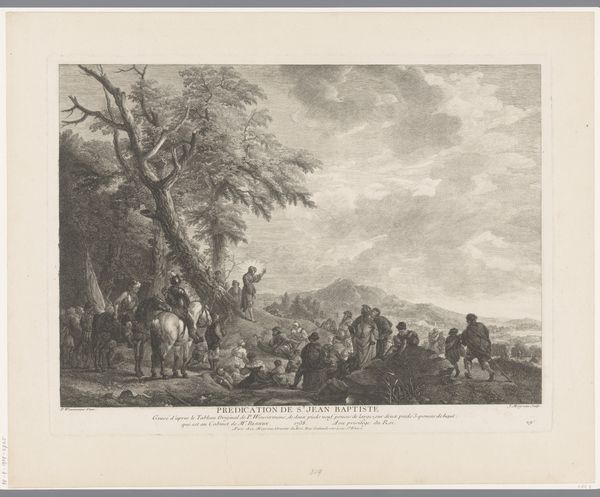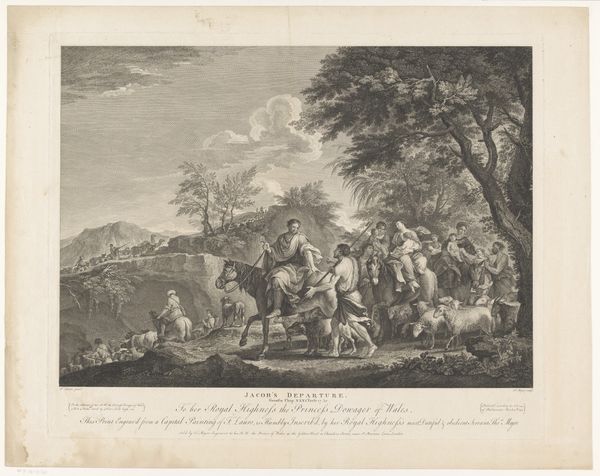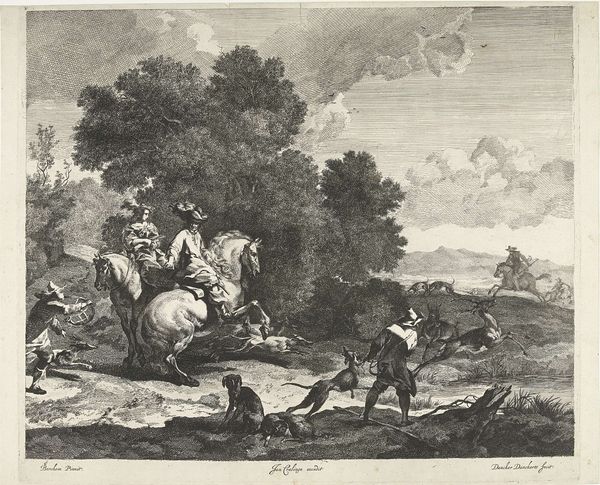
Dimensions: height 342 mm, width 412 mm
Copyright: Rijks Museum: Open Domain
Editor: We're looking at "Herders keren terug naar het dorp," or "Herdsmen Returning to the Village", an engraving dating from between 1748 and 1815. It’s currently at the Rijksmuseum, and the engraver was Emmanuel Jean de Ghendt. I’m struck by the sense of calm, almost like a perfectly staged pastoral scene. What captures your attention in this work? Curator: Oh, this piece is so much more than meets the eye! I always get drawn into the contrasting elements here - the rough simplicity of the herders set against this incredibly formal, almost theatrical landscape. Notice how Ghendt elevates the everyday into something… well, almost heavenly. The muted monochrome actually draws you into the scene. Doesn’t it make you wonder, though, why elevate a bunch of herders like this? What purpose do you imagine the image served? Editor: I suppose it elevates rural life to something more noble and idyllic... almost romanticizes it. It definitely does feel staged. But there's a genuineness to it too, perhaps because it depicts labour instead of leisure. Curator: Precisely! Perhaps a sentimental yearning for a simpler life amid growing urbanisation? It is a bit strange how formal it feels. It feels as if the artist wants us to connect, in our most emotional, most base and primal way, with people and how people live. And doesn’t it remind you of what connects you with art to begin with? Editor: That's such an interesting point. I was focused on the immediate visual appeal, but you’ve given me a whole new way to think about its context and deeper meaning. Thanks! Curator: My pleasure. Art, for me, it's an emotion, and all of this is an emotional way of connecting people across hundreds of years! I found that thought immensely hopeful.
Comments
No comments
Be the first to comment and join the conversation on the ultimate creative platform.
